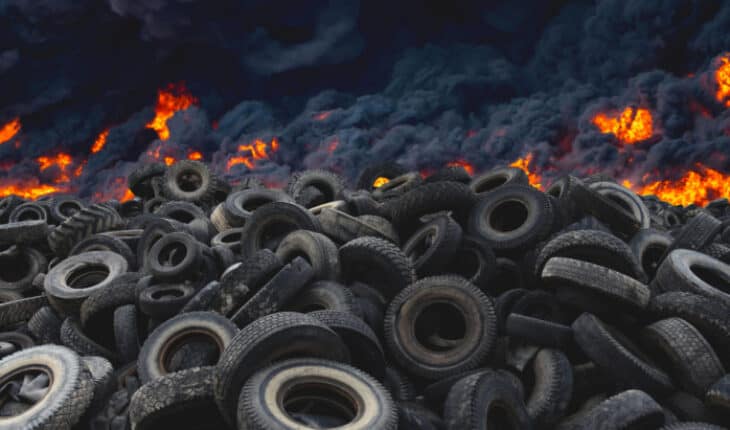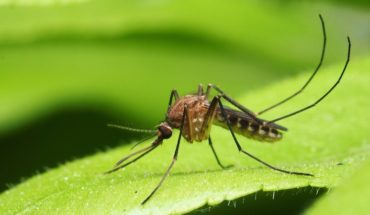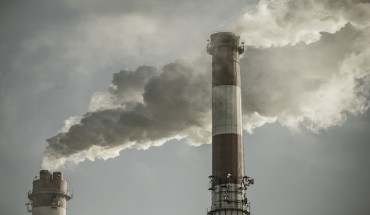Prioritise tackling toxic emissions from tyres, urge Imperial experts: Imperial experts are calling for more to be done to limit the potentially harmful impact of toxic tyre particles on health and the environment.
The researchers, from Imperial College London’s Transition to Zero Pollution initiative, warn that even though electric vehicles remove the problem of fuel emissions, we will continue to have a problem with particulate matter because of tyre wear.
Six million tonnes of tyre wear particles are released globally each year, and in London alone, 2.6 million vehicles emit around nine thousand tonnes of tyre wear particles annually.
Despite this, research on the environmental and health impacts of tyre wear has been neglected in comparison to the research and innovations dedicated to tackling fuel emissions. The Imperial researchers say that the effect of new technologies on the generation and impact of tyre wear should be a priority.
In a new briefing paper, a multidisciplinary group of Imperial experts including engineers, ecologists, medics, and air quality analysts have called for as much investment into tyre wear research as there is for reducing fuel emissions – and for understanding their interactions.
Lead author Dr Zhengchu Tan, of Imperial’s Department of Mechanical Engineering, said: “Tyre wear particles pollute the environment, the air we breathe, the water run-off from roads and has compounding effects on waterways and agriculture. Even if all our vehicles eventually become powered by electricity instead of fossil fuels, we will still have harmful pollution from vehicles because of tyre wear.
“We urge policymakers and scientists to embark on ambitious research into tyre wear pollution to fully understand and reduce their impacts on biodiversity and health, as well as research to reduce the generation of these particles.”
Transition to Zero Pollution is an Imperial College London initiative which aims to build new partnerships between research, industry, and government to help realise a sustainable zero pollution future.
Professor Mary Ryan, Vice Provost (Research and Enterprise) at Imperial College London, and a co-author on the briefing paper, said: “Safeguarding our planet and the health of future generations requires us to look not just at a problem from a single perspective, but to take a systems level approach. That’s why we need to look beyond just carbon and to consider human-made pollution in all its forms.
“Electric vehicles are a crucial step forward to decarbonise transport, but we need to look at the big picture too. Some are concerned that electric vehicles tend to be heavier, which might increase tyre wear. This is exactly why Imperial College London is driving a holistic, joined-up approach to sustainability challenges.
“We will continue to leverage the full strength of our research and influence to find meaningful solutions and help realise a sustainable, zero pollution future.”
In the briefing paper, the researchers discuss how tyre wear leads to these particles, where the particles end up, their potential effects on people and planet, and why we must act now.
Tyre wear particles
As tyres break down they release a range of particles, from visible pieces of tyre rubber to nanoparticles. Large particles are carried from the road by rain into rivers, where they may leach toxic chemicals into the environment, whilst smaller particles become airborne and breathed in. They are small enough to reach into the deep lung.
These particles may contain a range of toxic chemicals including polyaromatic hydrocarbons, benzothiazoles, isoprene, and heavy metals like zinc and lead.
Environmental effects
Particulate matter from tyre wear is a significant source of ‘microplastics’ in rivers and oceans, and tyre wear in cities could pose up to a four-fold greater risk to the environment than other microplastics.
While existing technological interventions, such as filters, and environmental policies could help to control our ecological footprint, there are huge gaps in our knowledge, understanding, and ability to forecast the impacts of tyre wear pollution.
Co-author Dr Will Pearse, from Imperial’s Department of Life Sciences, said: “Tyre waste does not naturally degrade and instead builds up in the environment, and may interact with other pollutants as well as biological organisms. Our gaps in understanding make further research and development of new solutions vital so we can limit all types of vehicular pollution.”
Health effects
The impact of tyre wear particles on human health is an increasing cause for concern, and the full long-term effects on our health urgently require more research.
There is emerging evidence that tyre wear particles and other particulate matter may contribute to a range of negative health impacts including heart, lung, developmental, reproductive, and cancer outcomes.
Co-author Professor Terry Tetley of Imperial’s National Heart and Lung Institute said: “We are growing increasingly concerned by the impact of tyre wear on human health. As some of these particles are so small they can be carried in the air, it’s possible that simply walking on the pavement could expose us to this type of pollution. It is essential that we better understand the effect of these particles on our health.”
Shifting gear
The researchers argue that reducing tyre pollution should be seen as a critical part of making transport cleaner and more sustainable, alongside reductions in CO2 and other exhaust emissions. In tackling the climate crisis, we should design better systems and technologies to protect the environment; and research funding, government policy and regulatory frameworks should reflect this.
The report authors call for policymakers and scientists to investigate the complex problems related to tyre-wear pollution, from the basics of wear-particle production, to understanding how these particles affect the health of people and the planet. Potential innovation solutions include particle capture technologies, new advanced materials, and disruptive business models that encourage different transport choices. These need to be coupled to clear policy and regulation and to a broader discussion around urban transport systems.
The research efforts, they say, should include the following:
• Establishing standardised ways of measuring environmental tyre wear levels and their toxicity.
• Reducing harm to land and water species and in humans by tightening limits on the use of harmful components in tyre materials.
• Launching new trials to better understand the short and long-term effects of different sized particles on the environment and human health.
• Efforts to better understand underlying wear mechanisms and to propose wear mitigation strategies such as reducing vehicle weight, using advanced driving techniques, and ensuring tyre materials pass wear resistance regulations.
Not peer-reviewed / Literature review and Opinion piece
https://imperialcollegelondon.box.com/s/xep6roua722khctt1q7uhwyez01pfd6b
https://www.imperial.ac.uk/
- Combination of drugs could prevent thousands of heart attacks - 21st April 2025
- UQ Study Links Poor Teen Diets to Heavy Social Media Use - 21st April 2025
- Gut microbiome could delay onset of type 1 diabetes - 3rd April 2025






